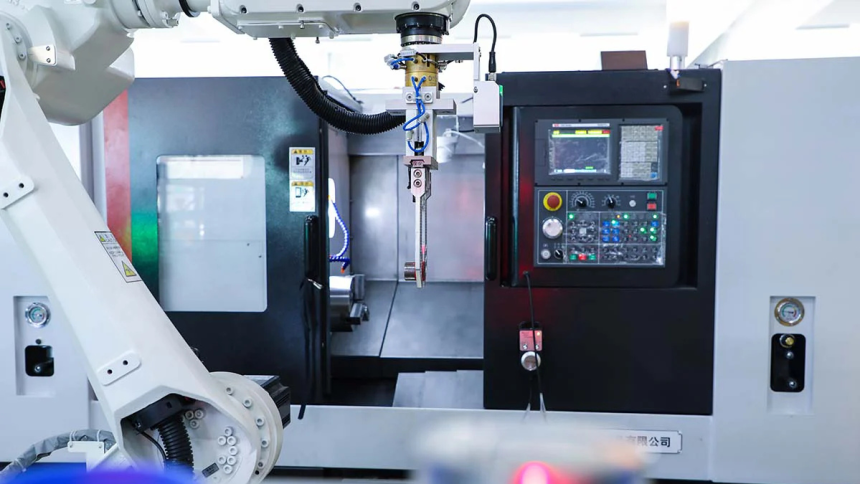The Unsung Hero of Modern Manufacturing
Picture a smart factory in full motion: robotic arms synchronously welding car frames, conveyor belts moving at a precise rhythm, and machines self-adjusting to optimize production. Amidst this orchestrated choreography, one question arises: What coordinates all this complex activity with split-second precision?
The answer lies in a device that rarely gets the spotlight outside of engineering circles: the Programmable Logic Controller (PLC). Think of it as the industrial brain that governs the behavior of machines on the factory floor. This article demystifies the PLC—what it is, how it works, how it differs from other computing systems, and why it’s so fundamental to modern automation and Industry 4.0.
And don’t worry—you don’t need an engineering degree to understand these powerful devices.
Deconstructing the “Brain”: What is a PLC?
At its core, a PLC is a ruggedized industrial computer designed specifically to control and monitor manufacturing processes in real time. Unlike typical office computers, PLCs are engineered for reliability and resilience in the harshest environments.
Key Characteristics:
- Built for Tough Environments: PLCs are immune to dust, moisture, vibration, extreme temperatures, and electrical noise.
- Focus on Inputs and Outputs (I/O): A PLC’s primary function is to read signals from various sensors and switches (inputs) and then control actuators, motors, valves, and lights (outputs) accordingly.
Basic Components of a PLC:
- Processor (CPU): The brain that executes control instructions.
- Memory (RAM/ROM): Stores the program and operational data.
- I/O Modules: The real-world interface that allows the PLC to receive data and issue commands.
These I/O modules come in many forms—digital or analog, simple or complex—and choosing the right module is crucial to ensure system performance and reliability. For those exploring real-world components, reliable I/O modules can be found at https://iainventory.com/collections/plc.
PLC vs. PC vs. Microcontroller: Choosing the Right Tool
For the tech-savvy, a common question arises: Why not just use a powerful desktop computer or a microcontroller like a Raspberry Pi?
PLC vs. PC (Desktop Computer):
- Reliability & Real-Time Operation: PLCs run on real-time operating systems (RTOS), ensuring deterministic responses. In contrast, a PC operating system might pause for updates or background tasks—unacceptable in critical industrial processes.
- Programming Environment: PLCs are typically programmed using Ladder Logic, which mimics traditional electrical relay logic. This visual language is intuitive for factory technicians and electricians.
PLC vs. Microcontroller (e.g., Arduino, Raspberry Pi):
- Industrial Grade vs. Hobbyist Design: Microcontrollers are excellent for prototypes and small-scale applications but lack the durability, certifications, and support needed for continuous industrial operation.
- Modularity and Scalability: PLCs are modular and can be expanded easily with additional I/O modules or communication interfaces, making them suitable for large and evolving systems.
The PLC in Action: Real-World Applications
To make this more tangible, let’s look at some practical scenarios where PLCs are indispensable.
1. Automotive Assembly Line
PLCs control everything from robotic welding arms to conveyor belt speeds, ensuring precise timing and safety interlocks to protect human workers and machinery.
2. Food & Beverage Plant
They manage the timing of ingredient mixing, regulate filling and sealing processes, and perform real-time quality checks to maintain product consistency and hygiene.
3. Power Grid & Utilities
Beyond factories, PLCs are integral to the control systems of water treatment plants and electrical substations, automating functions and ensuring uninterrupted service delivery.
4. Data Collection for Industry 4.0
Modern PLCs don’t just control; they also collect and communicate data. This data is passed on to higher-level systems such as SCADA (Supervisory Control and Data Acquisition) and MES (Manufacturing Execution Systems) for analytics, reporting, and optimization.
The Future of PLCs: Smarter Brains for Smarter Factories
Contrary to the perception of PLCs as legacy systems, they are rapidly evolving.
Increased Connectivity (IIoT)
Modern PLCs come equipped with Ethernet, Wi-Fi, and industrial communication protocols like OPC UA. This makes them key players in the Industrial Internet of Things (IIoT), enabling machines to communicate with each other and with centralized systems securely.
Enhanced Capabilities: Enter the PAC
The lines are blurring between PLCs and more advanced computing systems. Programmable Automation Controllers (PACs) are emerging as hybrid solutions, combining the reliability of PLCs with enhanced processing power, extensive memory, and advanced data handling capabilities.
These advancements underscore the importance of high-performance electronic components that power modern PLCs and PACs. Trusted suppliers like Iainventory ensure that these foundational technologies are robust, scalable, and future-ready.
Conclusion: The Enduring Core of Automation
To summarize:
- A PLC is a specialized, rugged computer tailored for real-time industrial automation.
- It differs from general-purpose PCs and microcontrollers by offering unmatched reliability, deterministic control, and industrial-grade durability.
- PLCs remain at the core of modern smart factories, enabling precision, scalability, and data-driven intelligence.
In an era where AI, cloud computing, and big data dominate headlines, it’s easy to overlook the humble PLC. Yet, on the factory floor, it’s the unsung hero ensuring that the promises of Industry 4.0 are actually delivered—one perfectly timed signal at a time.
Lynn Martelli is an editor at Readability. She received her MFA in Creative Writing from Antioch University and has worked as an editor for over 10 years. Lynn has edited a wide variety of books, including fiction, non-fiction, memoirs, and more. In her free time, Lynn enjoys reading, writing, and spending time with her family and friends.















